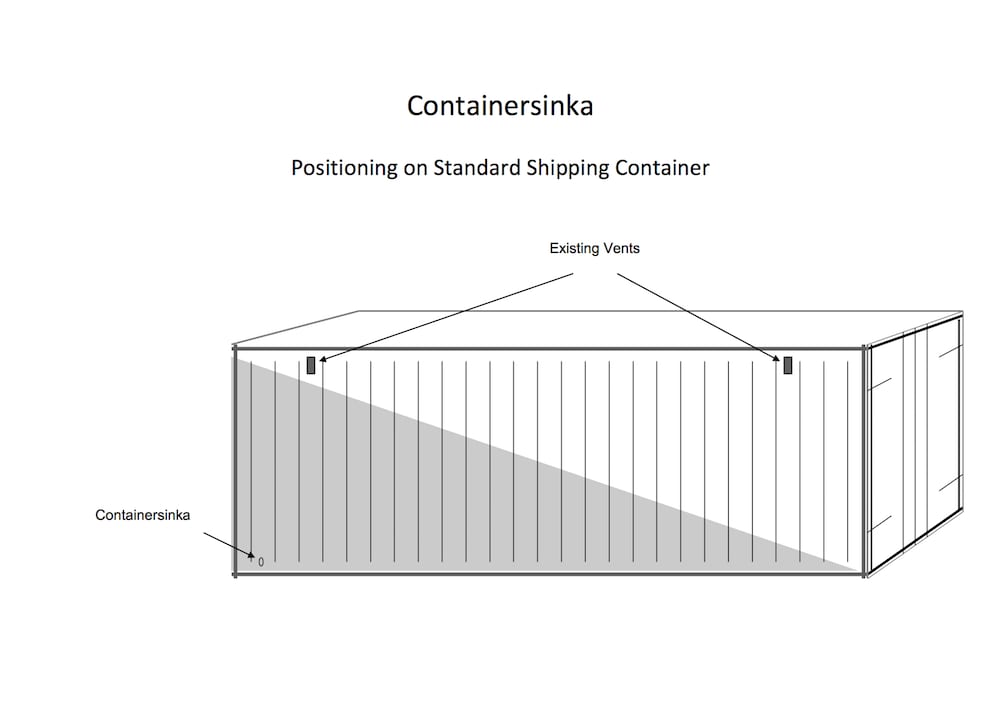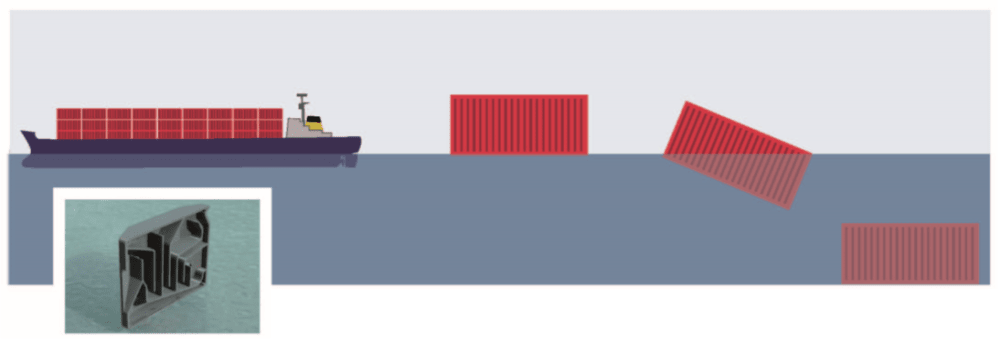There is no global, mandatory reporting requirement for shipping containers lost overboard at sea. Obviously the companies responsible would rather not mention that they regularly drop containers into the world’s oceans.
Currently the World Shipping Council estimates that 2,700 shipping containers are lost at sea each year. Other sources mention a figure of 10,000. It is estimated that around 50% of these containers float on for anything from a few hours to (theoretically) indefinitely.
Keeping shipping containers onboard is rightly a major industry priority, but once one is lost overboard, for whatever reason, Containersinka is the only solution out there. Innovative and unique, the “airbag option” of the seas if you will, it is the only device with a solution to floating shipping containers; a major source of “semi-submerged objects” that are a serious hazard to the safety (and lives) of crews, shipping, yachts, small craft and the environment as a whole.
It also allows for easier, much cheaper recovery if required, as search patterns for lost containers can be dramatically reduced.
A brilliantly simple molding that can even be retro-fitted if necessary, it is an open channel into a standard shipping container allowing constant airflow, yet will only permit water into a container after a time-delay.
Once fitted, if a container can sink, it will, swiftly, efficiently and without breach to its structure, safely containing any cargo, preventing future random dispersal into the environment through collision impact. A sealed, empty twenty-foot container, on a calm sea, can be sunk in less than 6 hours.
Being an open tube, the Containersinka also allows air to be blown in or drawn out for sampling, enabling Port Authorities and Homeland Security Agencies to check that, for example, cargoes are not mis-declared. Such sampling is non-invasive and so can be achieved covertly if necessary, without any need for legal access into a sealed container.
In 2007 the US 9/11 Commission demanded that, by July 2012, all shipping containers arriving on US soil must be screened. In July 2012 fewer than 0.5% were being screened. There are widely used, existing technologies that can detect toxic waste, drugs, explosives – even human beings - in seconds from a simple air sample. Containersinka is an open route to the currently inaccessible heart of a sealed, fully loaded shipping container and could be easily used in this screening exercise if fitted.
The nature of the valve also allows for its use as a “smart switch” for the location, marking and tracking of shipping containers lost at sea.
Two Containersinka devices fitted to a shipping container during manufacture could add as little as $10 to the build cost (that is less than 0.25%)
Just a little larger than a cigarette packet, Containersinka can be made of plastic (recycled/recyclable if required). It is totally maintenance free and self-resetting. There are no moving parts, it works by a patented system of airlocks and u-bends and is shaped and designed to be placed safely in the recessed “crinkle” of the container wall.
Like this entry?
-
About the Entrant
- Name:Toby Priestly
- Type of entry:individual
- Patent status:patented








